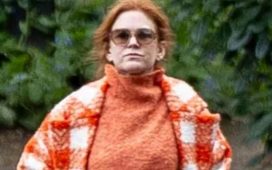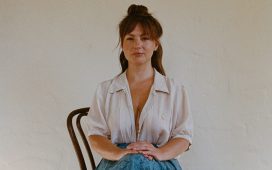The same goes for Line of Duty’s deliberately minimal, typography-only opening credits that appear as Carly Paradis’ now-iconic theme music plays. Peter Anderson (whose studio also produced the witty and baroque opening credits for Good Omens, and the emotional, clue-filled opening sequence for crime drama Unforgotten), hand drew the typography for Line of Duty for a very deliberate effect. “It’s all a little bit broken, a little bit imperfect. You can’t put your finger on it, but it’s not quite spaced properly, there are bits broken off the edge of letters.” The aim, says Anderson, is to mirror the storytelling. “It’s telling you as a viewer that there’s something not quite right, along the same line as the series: are the police good or bad? Who is or isn’t a criminal?”
There’s less ambiguity in the show’s sets and dressed locations, which, as well as for realism, are designed to visually represent power struggles and conflicts between characters. “Police HQ is the heart of the establishment,” Devenney explains, “so we went to the heart of the establishment – The Ulster Reform Club. The building dates back to 1885 and is in the centre of Belfast. It’s heavy with mahogany, drapes and ornate décor. Its imposing features perfectly highlight the confrontation of values between Ted Hastings and DCC Wise. She can’t hope to personalise such a space (her attempts are a little pathetic – shrubbery and family pictures!), and Hastings is powerless within it.”
As opposed to AC-12’s slick offices, where Ted reigns. AC-12’s space is deliberately more modern than Police HQ, and less cluttered and personalised than “The Hill”, reflecting its professionalism. “It’s very ‘corporate’ with signage, computer screens, etc. It’s become such an intricate, multi-layered entity that I think it could almost step into the real world, from the most incidental piece of stationery, to vehicle livery, to the office complex itself.”

Devenney designed the Central Police logo that features on all of the above to be credible, generic, non-region specific and apolitical. “With printed and onscreen graphics such an important ongoing narrative device, we needed a solid, believable visual anchor that fitted a massive variety of applications. It’s a brand that suggests an organisation with depth and we apply it consistently whenever we can.”
The AC-12 set is portable, and broken down for storage between series. “I think it’s always preferable to see real stuff through windows – especially in a large space like AC-12, so it’s created within an existing building here in Belfast.” Three different buildings have housed AC-12 over the years. Series two, three and four each used different locations, while series five and six used the same building as in series three but two floors higher up than before. “The city views are now a bit loftier than they used to be!”
A key part of the AC-12 set is the “glass box”, which was built with pivoting glass panels to adjust to camera and avoid reflections. “The interviews are crucial to Line of Duty and the “glass box” was a way to allow the viewer a forensic viewpoint on the process.” For series six, the interview room and meeting room home to AC-12’s evidence boards were recreated in studio to maximise Covid safety. “They had no ceilings and although it doesn’t look like it onscreen, they were relatively open at ground level.”













